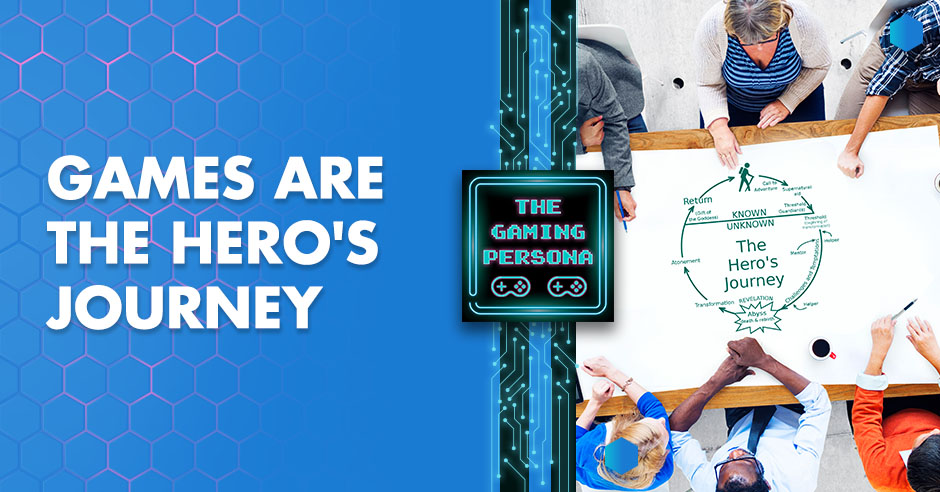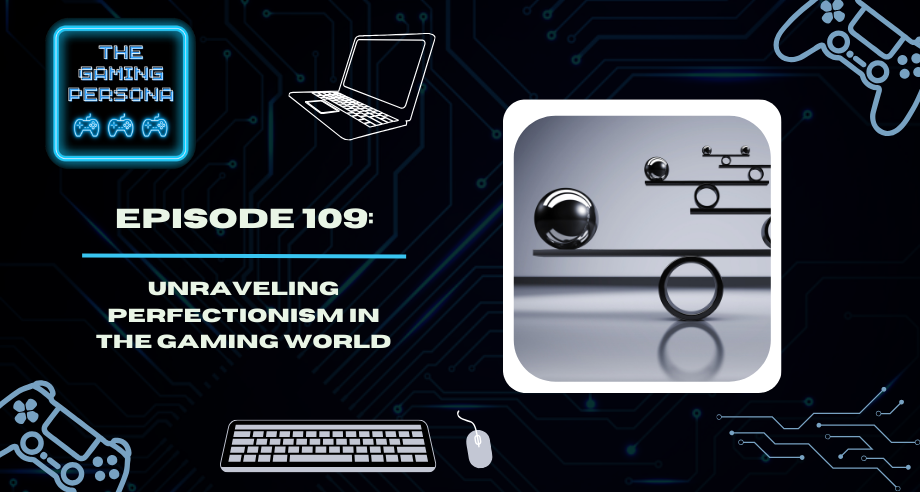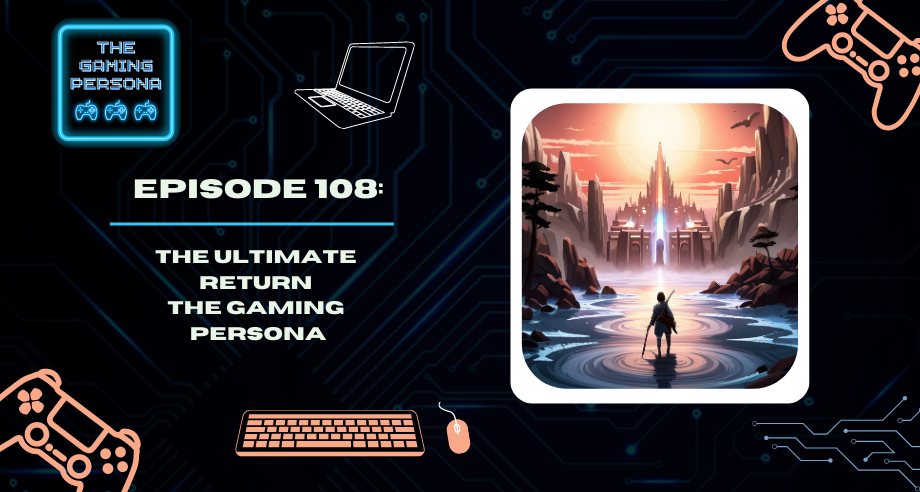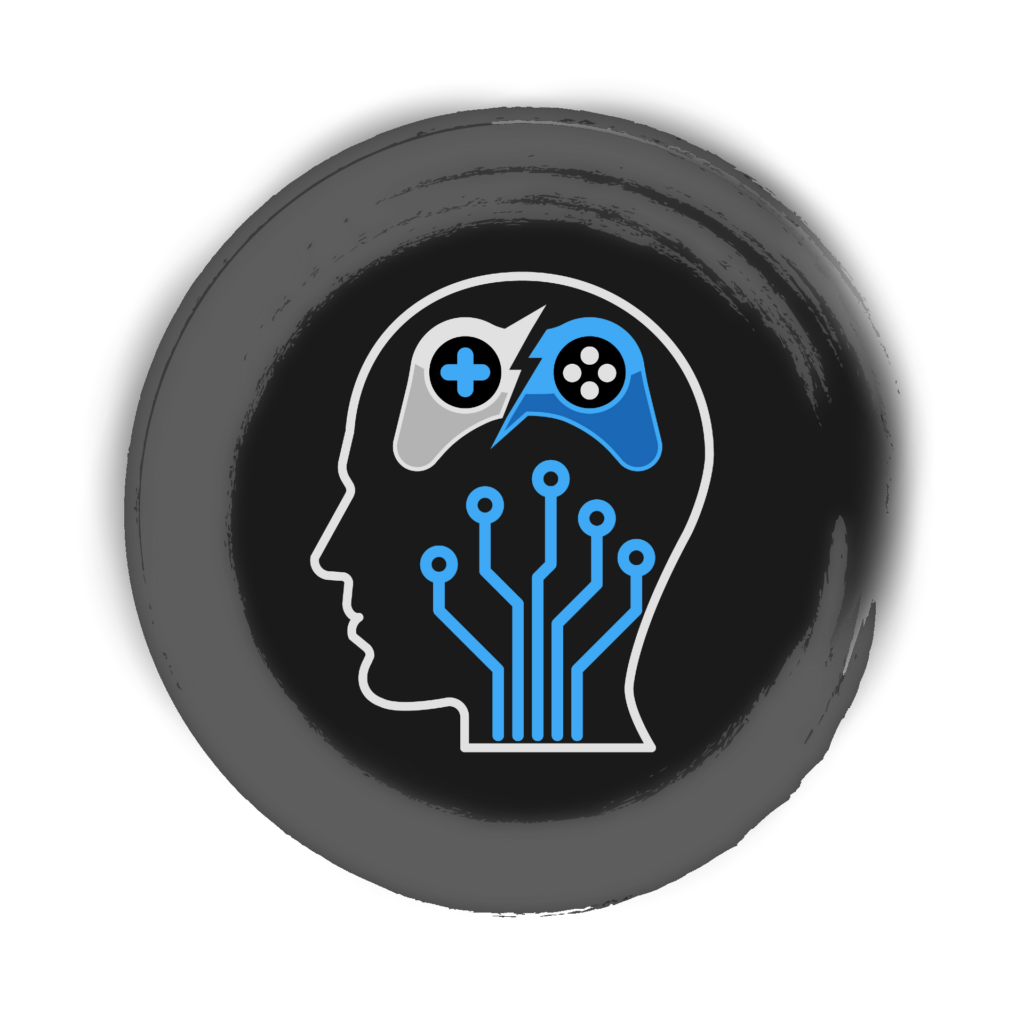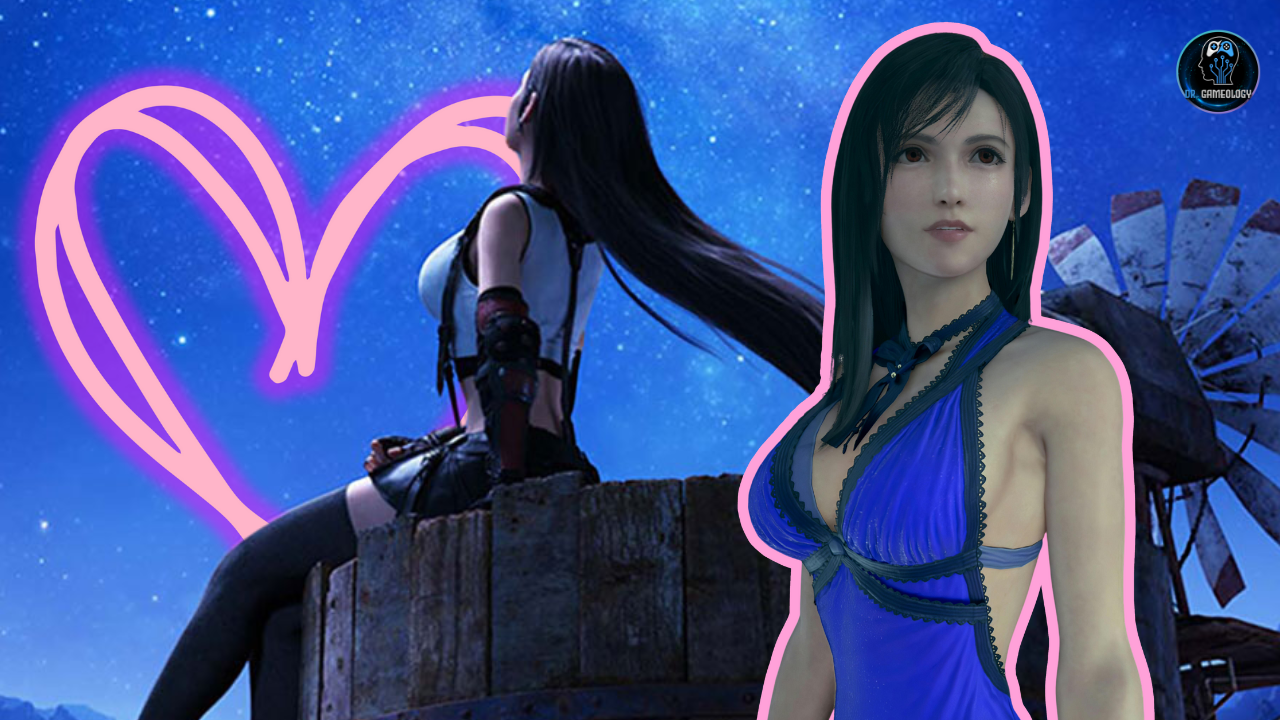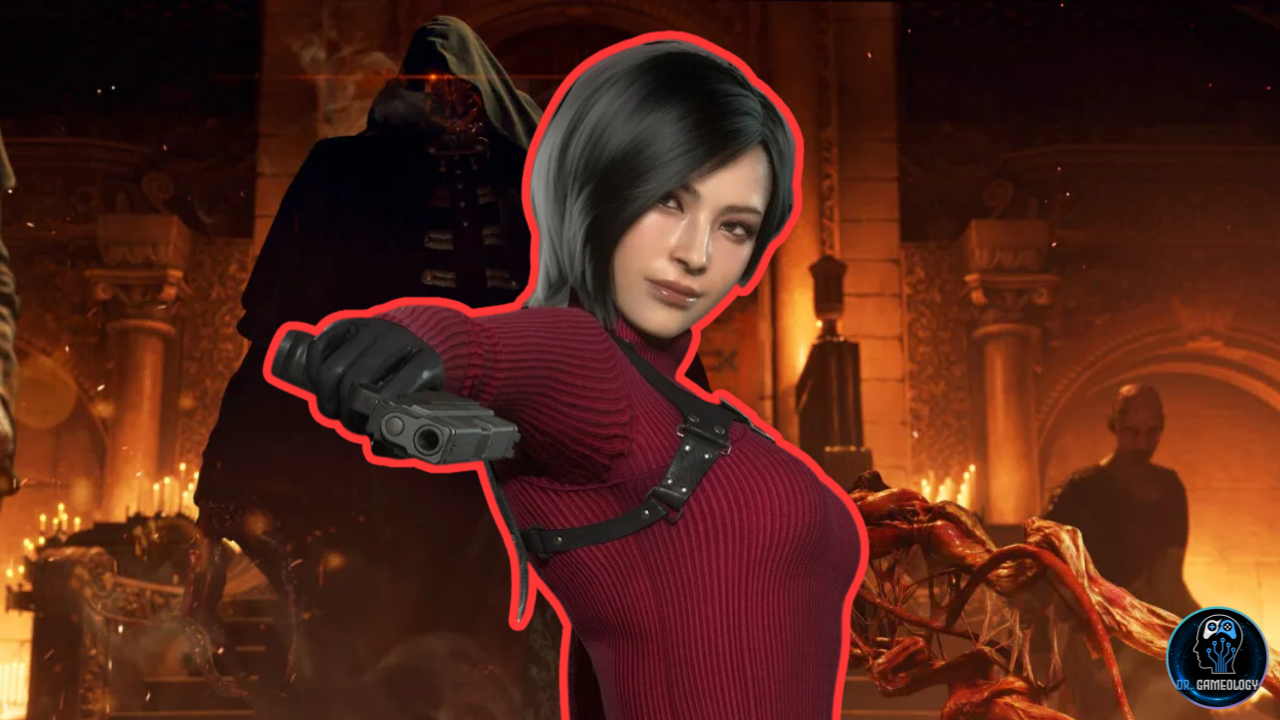The Hero’s Journey as the Monomyth discovered by Joseph Campbell is a pathway to helping narratives in our fiction speak to the deeper calling of our being to be unique and find our purpose. Dr. Gameology and Jenny use this episode to explain why the Hero’s Journey became the foundation of The Gaming Persona podcast as they apply the basic structure of the journey to four video games: Kingdom Hearts, The Last of Us, Star Wars: Knights of the Old Republic, and The Legend of Zelda: Ocarina of Time.
—
Listen to the podcast here
Games Are The Hero’s Journey
I’m @DrGameology on Twitch and other social apps. You can find me on this show every week. The show, at this point, can be found on most podcasting platforms, including iTunes, Stitcher, Spotify, Google Podcasts, and many others. If you’re enjoying our show, please go in and give us a five-star review and help other people find us. That would be a great way to help continue our journey and help other people find out about what the show is all about. Jenny, what are we talking about from the world of video games in this episode?
We are going to talk about Games and the Hero’s Journey.
It’s because somehow, we did seventeen episodes before this became a topic.
I don’t know how that happened.
I have no idea. I was talking with one of my good friends from my stream channel. His name is Tlaop. He’s caught up on our show and has been a big supporter of me when I started streaming at the beginning of quarantine and watching me play Persona 5 Royal for over 100 hours. He was with me for almost all of that. He pointed out in my Discord chat that, “A lot of people might not even know what the hero’s journey is. You might want to clarify that for people.” I live in this concept. Every day of my life is about this concept.
The Monomyth is the word that Joseph Campbell used to explain that there is one story that humankind is telling repeatedly across time to share our values and the influences of our culture in a subliminal, but still powerful motivational way. Click To TweetI’m not heroic. I’m not sword fighting or swashbuckling anything in real life. Maybe metaphorically, I am, but the idea that people would talk to me, be interested in me, and don’t have that foundation, I should have realized that’s a possibility, but it blew my mind. Quite frankly, it embarrassed me a little bit that I hadn’t thought of that months faster. Jenny, if we had never met, would you know about the hero’s journey?
Probably not in as much detail as I do.
If you were to watch Lord of the Rings, Star Wars, Moana, Frozen, and Charlie and the Chocolate Factory all back to back, you wouldn’t leave that living room feeling like, “I watched the same movie five times with a different coat of paint on it.”
There’s a theme, but I wouldn’t have known to put a name to it.
Before we get into any plot synopsis, I want to look at the hero’s journey or talk about anything in the vein of the monomyth and Joseph Campbell in the video games we’ve come to enjoy and respect over the years. We are going to be spoiling plot points for the games that we are talking about in this episode. If we have chosen relatively old games in the scope of what makes a video game old, does that mean it’s eighteen months old? Does that mean it’s eighteen years old?
We have games in our list that we’re going to break down how the phases of the hero’s journey get transposed into those plots. If you, for some reason, have not played these games and don’t want to learn the plots this way, I would encourage you to be very hesitant about certain phases of our conversation in this episode.
We’re not doing anything with new 2020 games, but I know people that are pretty sensitive to spoilers. I want to give this everything we’ve got because it’s an important topic to me. Let’s go to the ordinary world where we share our everyday life through our games. Jenny, how are you in the world of gaming this time around?
I got to play Final Fantasy XIV with you. It was fun. We played quite a bit. Do we play twice this before?
We might have. I am getting into the forceful text messaging game.
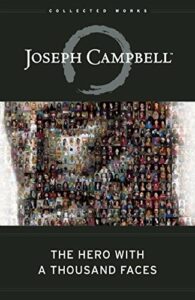
I appreciate it. I leveled up to level twenty. The last time we talked about this was level 9, but I’m level 20 now. I even played after you guys logged out last time, which does not like me. I don’t play video games by myself ever, but I was having such a great time. I was so close to getting to level twenty. I was less than 2,000 XP away, and I couldn’t log out without being level twenty. I knew there was the quest to dye your clothes different colors and be able to glamour things, which I am not the person to explain glamouring in this game. That’s a you thing or an internet googling thing.
In this game, fashion is a huge part of this game. I cannot wait until that is a part of my gaming experience with Final Fantasy XIV. For now, I have this pretty cool black hooded cloak, which I’m okay with, and a janky wand and shield. It looks awful, but it’s fine. There are two quests that you have to complete in order to be able to dye your clothes, have a glamour chest, and have different pieces of clothing that don’t look like your armor. I completed those quests, and that got me to level twenty.
One of the things hitting me hard while I’m leveling different classes is that my main class is way far ahead of the rest of my group. It’s got a barrier to it. I have to use other classes in order to join in a lot of the group activities. As I level, I will glamour the set of armor so that I still look okay, get 2 or 3 level-ups in that class, and go right back to wearing a terrible shirt.
I don’t want to look the same in every single class that I play, but I also don’t want to look bad in any class that I play. I have found that the easiest thing for me to do is when I’m playing black mage that my trench coat is a darker purple-ish color. When I play a blue mage, my trench coat is a blue color. When I play a red mage, would you like to guess what I do for my glamour or dye on that one?
Is it the red color?
Yes. Final Fantasy has a built-in color system that I feel okay about. I don’t mind wearing that trench coat for as long as I need to until I find something better. Jenny, I’m running into a lot of barriers that some of the outfits don’t look that great that are available on the marketplace board for me to purchase now. I don’t know what to look for either. I tried a couple of websites, but I know there are so many options, and I have to learn how to look for what I’m looking for.
If anybody’s reading and have any tips, I’m all eyes. I fell into this Final Fantasy XIV glamour fashion rabbit hole. I found this website and spent I don’t even know how much time. I just blacked out looking at all of these coolest outfits ever. It was this whole database, and it links all of the armor pieces. It seems a little bit complicated because you can only wear certain things based on your class and race. I need to learn more about it.
That’s cool because if you think about it, we have limitations in the real world to what we decide to wear. Some of those are psychological. Some people look at an outfit and say, “That’s a guy’s outfit. That’s a girl’s outfit.” In fact, it’s just an outfit, and some people see outfits as, “I can wear that regardless of what my biological gender is.” The other people with their little boxes that their mind lives in struggle with that. In Final Fantasy, the box is coded into the game that you are a Hyur or whatever the human translation into Final Fantasy is.
You can wear these outfits. You cannot wear outfits belonging to another species because there are holes in this outfit that make no sense for humans to have holes for horns, ears, or other things. Some races have tails too. Instead of translating that gear item into the other class, sometimes classes cannot use them. That’s an interesting layer in the game development to make the species you pick mean something in terms of the presence that character can have in the game.
The ordinary world is safe because we don't know the depth of the powers of darkness that have a plan that will affect existence in that ordinary world. Click To TweetThey also do it based on your classes, job, and the game. There are certain outfits that you can wear and can’t wear. There are different sets. I don’t know the name of this particular set, but I found this one outfit that I can wear, but it’s an end-game outfit. There’s going to be some time before we can get there. As you said, we will get there. It’s part of a set, and each class has a different iteration of this particular outfit. Thankfully, the iteration for my class is my favorite iteration of this outfit, but they all look very similar. They just look a little bit different depending on what class you are in. It is very interesting.
It’s such a fleshed-out element of the game. I’m sure that the ordinary world is going to become Final Fantasy fashion.
We should come up with our Final Fantasy fashion jingle.
I’m going to have to drag my sister into the production for this show and do things with her musical talent to make us hit that next threshold. For me, I played Final Fantasy XIV with you, my wife, our other friend, and Marcus from AIE. I want to give a special shout-out to Nama on Discord. That’s the username they go by.
They’re joining us in Discord and let us know that they were reading our episode after I posted it in the guild Discord. There are all the complimentary things they had to say about our first few episodes. It’s neat to get to connect with someone who’s reading and build a connection online that way. I welcome anyone that likes this show to let me know on Twitter or if you are on my Discord. You get to my Discord by watching me on Twitch.tv/DrGameology.
Ask me for a Discord link, and I can share that in the chat. That’s the pathway to meeting me in that way and being able to talk with Jenny and me behind the scenes in between episodes. For me, I’m going to hit my bullet points so we can keep moving forward. My research team meetings are starting back up.
I’m excited to get to take some of those next steps and have some more in-depth conversations about how mental health and video games are coalescing into a professional topic. That’s my passion area. That’s why Dr. Gameology exists. That’s why I make mental health moments and try to put them on social and YouTube to try to help people see video games in a psychological and productive way. I’m in patch land in Final Fantasy XIV.
I’m in between the first part of the game, which is A Realm Reborn. I haven’t made it to Heavensward yet, which is the first expansion building off the base game. I’m in the mission after mission of talking to people, fighting things for five seconds, then going to talk to people. I’ve done a couple of boss fights in this and beaten some more primals. Those are the gods that become boss fights that get released each patch expansion to the game.
It’s still fun, but I am looking forward to the next true expansion part of the story. I’ve also discovered blue mage as a class. A lot of people have strong feelings about the blue mage. I’ve already figured that out by being present online. Some people love it. It’s so weird because you can do elements of all three roles in the MMO trinity.

You can do things like a tank, healer, and DPS, which is helpful when I’m helping you and my other lower-level friends who are getting into the game because I can go in and do what we need, and the group content, no matter what the group content is if I’m leveled up high enough as a blue mage, but leveling is different. You’re encouraged to do it alone. You seem to get better experience points when you’re alone. You’re encouraged to do things that are not group-related at all. If you do a fate and defeat 50 enemies there, that’s not nearly as good exp as defeating four enemies that are in the wilderness. It’s so weird.
You only learn your moves by fighting different monsters, learning the move from them, and defeating them in order to claim that move. It’s like a scavenger hunt, and I enjoy it. It’s so different than anything I’ve ever played because you usually get your moves by leveling up and talking to your trainer. That’s where we’re at in the ordinary world. Are you ready to get into the deeper part of our discussion?
I am.
That takes us to the Road of Trials, where we face our challenges and discover our strengths. For this episode, we are going to talk about Joseph Campbell’s monomyth. If anyone wants to read a book and learn much more than we could ever fit into this conversation, you can purchase the book The Hero with a Thousand Faces, which is by Joseph Campbell. It was originally published in 1949.
This book means a lot to me because when I read it, it translated my entire experience of my own life, helped me see the different stages of my life challenges, academic challenges, the transformations of my friendships and relationships over time, and have some narrative weight to the idea that maybe I am the hero in my own journey. I’m fixating on that point and trying to figure out how you use that to help people. It eventually went itself to changing the way I see myself as a player of these video games.
Jenny, I had asked you if you would see those connections in a series of movies. I know that out of the two of us, I’m the one that’s read The Hero with a Thousand Faces, and you’re the one who gets to listen to someone endlessly talk about how they read here. When we started talking about this as our next episode topic, what were you hoping to find that would help you see video games this way and join me in this conversational quest?
Since talking about this with you in this show and our segments are based on some of the different stages of the hero’s journey, it’s been more at the forefront of my mind. I’ve never thought of it in terms of video games before. When I am watching movies and consuming media, it’s something that pops into my head. In the beginning, it’s always calm, and we’re in the ordinary world, and then it’s like, “What’s the call to adventure? What’s the point of this movie?” It’s something that’s a lot more at the forefront of my mind.
Around the time I was reading the first half of The Hero with a Thousand Faces, some important video game things and academic things were happening to me. You were right there during many of these events. I was playing the dark versus light event in Star Wars: The Old Republic. I was finishing my dissertation. I played the video game journey for the first time. The next two movies that I remember seeing in theaters and this little frame of time were Dr. Strange and Moana. Both of those are heavily influenced, shamelessly applying the stages of the monomyth.
The monomyth is the word that Joseph Campbell used to explain that there is one story that humankind is repeatedly telling across time to share our values and the influences of our culture in a subliminal but still powerful motivational way that we are giving people our value system by exemplifying the role of the hero and portraying challenge, resilience, motivation, drive, perseverance empowerment, and all these other qualities that a person has to go through in order to reach the best version of themself.
The call to adventure is the moment where the nobody in the story is given the opportunity to be courageous or heroic, and do something outside the norm. Click To TweetVideo games, for me, started with a very simple one, Super Mario Brothers on the Nintendo entertainment system. Due to how limited the narrative is, you would have to project a lot of your own understanding to say that version of Mario is a personification of the hero’s journey. If we’re going to challenge ourselves to do that, what do you think we can learn about the quest to be a hero from a simple game like Super Mario Brothers?
When you are faced with different challenges and temptations and things like that, you can always overcome them. There’s a reward at the end. You always return. It’s things like that.
The levels escalate in terms of what enemies you see and what powers Mario can get at what phases of the level. Even though there are no RPG elements per se in that original Mario, the first level, basic enemies, goombas, some turtles, the mushrooms are there to grow big. There are invincibility stars hidden in some of the question mark blocks.
You’re able to get from left to right, claim the flag, and reach the castle at the end. You then go into the depths, the cave in that first pipe. It’s a pretty basic level. You get some turtles with their shells, some goombas, get two break your head on some blocks, and navigate that path from left to right. You then pick your pipe and go to the next world.
Before you know it, there are staffs of fire swinging at you. There are enemies that can fly and drop spiky enemies on you, and there are fire flowers. Mario is still experiencing a non-narrative but environmentally a hero’s journey that you learn, “Rescuing toad is not that important. I’m here to save the princess.” It’s toad after toad until, eventually, you defeat the most resilient copy of King Koopa, and Princess Toadstool is in the castle that you’ve found. That’s a basic starting point for how you see the growth of a hero in a video game framework.
Now we’re going to make it a little bit more complex. The games that we are going to portray as examples of the hero’s journey. In this episode, I’m going to share a couple, and Jenny’s going to be able to review a couple. What we’re going to talk about is Kingdom Hearts. The Last of Us Part 1, Star Wars: Knights of the Old Republic, and you will help us work our way through the Legend of Zelda: Ocarina of Time.
That’s a heavy-hitting list of video game classics in my mind. If you haven’t played those and think about those as potentially being tough for you to read to the full narrative from beginning to end on a show like this, maybe duck out and come back to this episode when you have changed your mind where you’re not worried about an old game being spoiled. When I think of Zelda, I don’t think you can spoil the ending like, “Link defeats Ganondorf. You ruined it.” Let’s do this now.
The hero’s journey and the monomyth have so different iterations, transformations, and twists and turn that they can go through. We are going through some of the basic phases of the hero’s journey in this episode. If there are specific ones that you would like us to talk about in the context of video games generally or a specific game, that’s where you use Discord or social media to reach out to Jenny or me and ask, “What do you think about this?” That can get an idea onto our list of future topics.
We’re doing a basic framework for the hero’s journey with four games that we collectively love a lot. I love the Last of Us. Besides that, we collectively aspire to love a lot. We do this every episode. The first stage is the introduction to the ordinary world. Every time that we start that segment, whether you or me queuing it in with our voices, what comes to your mind in terms of the heroes in video games, and you try and figure out what to say on our show about appreciating and understanding a person being in the ordinary world?
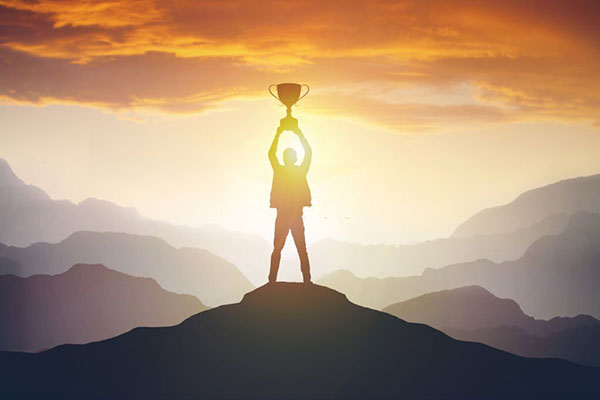
The ordinary world to me is like the calm before the storm. The natural people are in their natural state. In terms of our show, it’s right before we get into the meat of our conversation and free flow talk about, “What happened this week? What kinds of things are going on in our lives?” before we get into it.
I like how you described that because you say that it’s calm and the natural state of the ordinary surrounding world, but it’s not. If we look at a game like Kingdom Hearts or The Legend of Zelda, the character wakes up and is welcomed by a couple of characters. It’s like, “Welcome to this video game. This is your starting point. Go over here, swing at this, jump on that, and roll under this.” It’s the tutorial section. Going specifically into a game like Kingdom Hearts, you’re playing a character named Sora.
Sora is waking up on Destiny Island, which is a nice, beautiful little square and Disneyfied island in the middle of never-ending expansive water. This island is one day away from being doomed by the power of Ansem and the Heartless. Who’s Ansem? What are the Heartless? That’s the point of the game. The ordinary world is safe because we don’t know the depth of the powers of darkness that have a plan that will affect existence in that ordinary world. It’s like Star War’s Luke Skywalker on Tatooine.
There’s a battle between the Rebel Alliance and the Galactic Empire in the sky. That escape pod crashes into this ordinary world where everything is peaceful and super hot. There are two suns, but the natural order is uninterrupted. As viewers of video games, we know that it’s not going to stay peaceful this way. The ordinary world is a facade for the characters to think everything’s going to be fine with no effort, when in fact, everything will be fine, provided the right people put their effort forward to become the hero they’re meant to be. What do you think about that?
I like that. I hadn’t thought of it that way. In our ordinary world, we’re clueless in terms of our show until we get into our conversation.
The only way that the ordinary world will stay normal and okay is if we finish the episode. That’s the metaphor. The gaming persona’s ordinary world is not okay if we don’t hit record and talk. I get fixated on the wrong things for twenty minutes, we get back on task, and we turn the ordinary world into something that has the road of trials and the ascent, and then we can return to the rest of our normally ordinary world scheduled afternoon on our Tuesday. What is Link going through in the Ocarina of Time that introduces us to his ordinary world?
He just wakes up in Kokiri Forest.
Does he meet anyone saying, “Listen?”
He meets Navi.
Everything that was in the game to feel safe like “I’m a hero fighting a villain,” or “It’s going to be fine,” really gets shattered when we go inside the innermost cave. Click To TweetThat’s important because Navi grounds us in the world. Link doesn’t talk, but Navi has a few words that we can understand through our Nintendo 64. It helps us feel like we belong like we have a permanent friend. We’ve talked about Kingdom Hearts and Ocarina of Time. For The Last of Us, we have a character in the prologue, Joel.
His daughter gets killed on the first night of the outbreak in that game. His ordinary world is a shattered existence. We do a time jump. We learned he’d become a heartless, callous smuggler in the Boston area in the early parts of the game. Our introduction is a post-apocalyptic world that has found a set of status quo iterations for humanity to survive. That humanity has been brought to its knees by this outbreak that The Last of Us is struggling to survive around.
In Knights of the Old Republic, this is a Star Wars game. We are a medical patient who wakes up on a ship that’s being attacked by the Sith empire. We go into the hallway. We’re given a vibroblade and a blaster. We’re taught how to fight our way to the escape pods. We take the escape pod down to the planet Taris, but we have no memory of what’s going on. We’re flying by the seat of our pants, trying not to die. The ordinary world of Knights of the Old Republic is one of war and conflict and, “Wake up because if you don’t, you’re going to be on a ship that’s about to explode.”
For some people, that is their natural state.
There are different levels of adversity in these ordinary worlds. We have Sora and Link waking up in natural paradises, like the Kokiri Forest. There’s a defined society and the Destiny Island nicely put together. We have a post-apocalyptic hero, Joel, and an unnamed amnesiac waking up in the middle of a war between the Republic and the Sith. Those are our four heroes’ journeys we’re going to work through the rest of the stages in this episode. Jenny, like we end our ordinary world every show with the call to adventure, what is the call to adventure in one of your games on the list?
In the Ocarina of Time, Navi tells Link to go to the Great Deku Tree to end the curse. That’s his call to adventure.
The call to adventure is the moment where the nobody in the story is given the opportunity to be courageous and heroic and do something outside the norm, something that sometimes they’ve been dreaming about for a long time that would have substance and give their life purpose instead of this ho-hum continuing to float through life with no impact, meaning, and purpose.
For Sora, who wakes up in pretty much the same existence that Link does, the Heartless are on the island. They start showing up. He and his friends, Kairi and Riku, were planning to get on a raft, leave the island, and see how far the water would go. The Heartless intercept that opportunity by one morning. They arrived and ruined everything.
Sora also meets a “figure” that speaks pretty cryptically and seems to push Sora in his words and in the strange things that happen before and after that conversation into the role of being more impactful than just a regular boy waking up on an island called Destiny. We have the starting point for both of these heroes, and there’s an opportunity to do something that will be meaningful but also dangerous. The call to adventure is saying, “This is going to be dangerous.” In terms of movies, do any movies or literature moments pop in your head as a good example of the call to adventure?
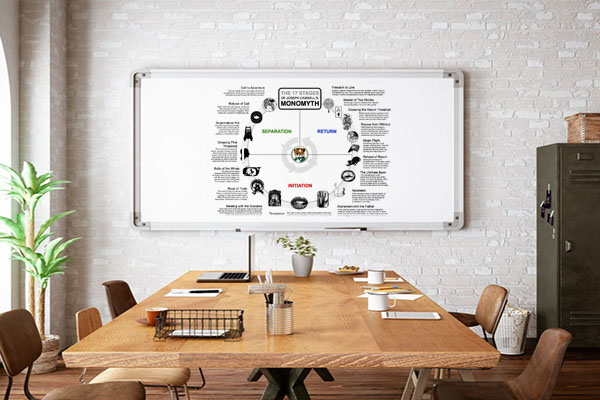
The biggest one, maybe not for everyone, is I’ve got Gandalf telling Frodo that he must destroy the one ring. That’s a huge call to adventure.
Gandalf is typecast in that role, too, because whether you start with Fellowship of the Ring or The Hobbit, he shows up at that same door and tells whatever Baggins is living there, “Pack up your things. We’re going somewhere.” It’s interesting the weight of the journey when you compare Bilbo to Frodo. That’s not a video game conversation, but anyone who’s read this episode so far probably knows that Lord of the Rings is near and dear to my heart and yours.
Occasionally, different movies and different franchises will creep into the gaming persona. Thank you for reading, but you’re going to have to live with it too. Moving into the Last of Us, Joel has a partner named Tess. They are given an opportunity to transport and trade a young girl named Ellie to a group called the Fireflies in exchange for guns. This is a mercenary quest, like in The Mandalorian, where there’s no indication that this is going to be a meaningful transaction. It’s just mercenary life in a world gone to dust, “I need to be compensated. I need better weapons. I need better gear.”
They agree to take Ellie, and that’s their call to adventure. Little do they know what’s going to happen in terms of what Ellie is, why they’re trading her, and why someone would want to give lots of guns away for this little girl. In Knights of the Old Republic, I already included this in the ordinary world. You crashed the escape pod on Taris. You met Carth Onasi and learned about Bastila Shan, a Jedi knight who is somewhere on this planet, “We should find her because that’s the only hope we have to get off this planet to evade Sith awareness and continue being a force for good with the Republic army.”
We have the call to adventure. We have this opportunity like, “I don’t understand why I was on this ship. I don’t know who I am. I guess I’ll help you find your Jedi lady.” The next phase doesn’t always happen in a way that we as the audience would notice, but it’s called the refusal of the call. I’m going to let you go first with Ocarina of Time to help explain what I mean there in terms of it doesn’t always happen. Can you do that?
In Ocarina of Time, Link doesn’t do the refusal of the call per se. He doesn’t outright refuse to go to the Deku Tree. He has no choice but to take the quest. Once he gets to the Deku Tree, he is given an additional quest to take the Kokiri Emerald to Zelda. Technically, it’s not an outright refusal, but because he has no choice but to do it, it serves as the refusal of the call.
For Link, his outcome is he gets thrown into the deep end. You’re either going to give up on this game because it’s too big for your brain to wrap your head around, where Link will just be a saved file that never saves Hyrule, or you’re going to do this quest. The refusal of the call is the player’s ability to understand the mission, follow-through, and complete it, not Link in the story that happens on screen. It’s in the story that happens with your hands on that controller.
In Kingdom Hearts, Sora also gets thrust into battle. He never has a moment where he looks at these Heartless, and he’s like, “Nevermind. No, thanks. Not for me.” In fact, he’s armed with a wooden sword on Destiny Island. You have to do a fight where you swing it to the Heartless, and you cannot hurt them. Sora is determined to win this fight, even though he has not won any fights in his life up to this point. If you’re talented at the game, you can best your friend Riku in a wooden sword fight in the tutorial.
Most people will lose that fight to set up the idea that Riku is more powerful than Sora because, in that boyhood fight on the beach, Riku is the more skilled swordsman. Sora doesn’t care. He’s like, “My island’s getting sucked up by a Heartless’ darkness black hole. I’m going to fight everything no matter how few tiles it is.” Sora doesn’t refuse the call either at that moment, although the player could get lost in the RPG mechanics, miss a conversation, fail to understand the map, and maybe stop playing the game.
Player skill is actually part of the growth into being the hero. Games should make the challenge feel insurmountable until you realize a new thing and move forward. Click To TweetSimilarly, in video games, the refusal of the call, you don’t see this all that often unless you have a cut scene for it. Going back to our game that we play together, Star Wars: The Old Republic, which is a sequel of sorts to the Knights of the Old Republic video games. There are two of those. Our conversational choices indicate a refusal of the call sometimes. If you keep playing, you’re going to end up doing those quests. Go ahead, Jenny.
This particular phase is much better illustrated in movies and books, like when Frodo’s reluctant to leave and when Harry doesn’t believe that he could be a real wizard.
Luke Skywalker also declines to go with Obi-Wan to Alderaan because it’s so far from here, but he goes home, and his aunt and uncle are toast. He has nothing on Tatooine anymore, “I might as well go with this Jedi who seems to have an uncanny knowledge of me and what I’m capable of.” That brings us nicely into the meeting with the mentor. I’m going to go first. I want to talk more about Kingdom Hearts because one of the main mechanics in Kingdom Hearts is you meet Donald and Goofy in Traverse Town. They become your battle party for the duration of the game.
There are also other mentors in the form of Final Fantasy characters. This is where the Disney Final Fantasy crossover serves. The narrative point is you have Squall Leonhart from Final Fantasy VIII, Yuffie and Aerith from Final Fantasy VII, and also Cid, all meeting up with you at different points in Traverse Town, which is the first place you go after getting spit out of Destiny Island through the void. It would be very easy for Sora to be lost, but he ends up meeting these people who know what to do.
Sora is holding a Keyblade, which marks him as an important figure because Donald and Goofy are looking for a Keyblade master. They don’t find a master, which is the funny part of their quest. They find someone with the Keyblade. That bond and friendship serve as the mentor function for Sora. For Link, what things serve as the mentor for him as he goes through Ocarina of Time and his journey through Hyrule?
There are a few different characters that fulfill this role at different stages. First, there’s a Great Deku Tree. There’s Navi, Rauru, and Sheik, which is Zelda. They all fulfill the mentor role at different stages of the journey.
I forgot to say one thing about the Last of Us. I have to backtrack to the refusal of the call. Joel originally does not want to go through the long journey to send Ellie to the Fireflies. The Fireflies are not where they’re supposed to be. This becomes more than Joel bargained for. He wants to give up on this, “It’s not worth it. I’m not taking you this girl out of state or across the country,” but his friend, Tess, dies. She makes him promise very similar to how Qui-Gon makes Obi-Wan promise to train Anakin. She makes Joel promise to take Ellie to the Fireflies.
Out of honoring that friendship, he promises begrudgingly to take Ellie. When they go to the next couple of towns over, this is where meeting the mentor happens. You run into Bill, who’s talented at surviving the post-apocalypse. You get a couple of new weapons and learn some new tactics that you can use against the infected. It takes you to the next phase of the game via an epic car chase shooting battle. Bill serves as a transition point in the story that the hero had a quest. They decided to go along with it, not exactly knowing what it’s asking them to do fully, but they’re going to do it.
The mentor provides a stabilizing grace to figure out how they will get this plan to work. Similarly, in Knights of the Old Republic, you get off the planet Taris. You go to Dantooine, where there’s a Jedi temple, and then discover you have the force. All those Jedi masters, the training, you’re dabbling in making decisions like a Jedi or a Sith, wielding a lightsaber and using the force in your battle abilities. Those things become the mentorship of the narrative.

All four of our characters, Link, Sora, Joel, and the amnesiac Jedi medical patient, all have met mentors in different ways that represent a connection to the larger narrative in the game’s story. That larger narrative becomes a threshold. Once we cross this line, we’re now part of the great adventure. Let’s go back to Link. What is Link’s crossing the threshold?
Link finally delivers the Emerald to Zelda. She then asks him to collect the remaining two Spiritual Stones. It expands his initial errand and crosses him over to the threshold.
For Sora, Sora receives the ability to pilot a gummy ship. Think about an X wing made out of gummy blocks and shooting lasers out of fruit gummies. I don’t know what they were going for there, but that ship represents the ability to fly to different worlds from the catalog of Disney. That’s where the levels of this gameplay out. That signifies Sora, Donald, and Goofy’s quest to save the kingdom, find King Mickey and become heroes on their own. For the Last of Us, Joel and Ellie ended up going to a couple of different cities in different locations in their quest, searching for clues as to where the Fireflies are.
Their travel and surviving these different areas, these different infected, and also these different groups is them crossing the threshold. There’s no going back to Boston now because we’ve gone too far to turn back. It wouldn’t make sense. It’s more dangerous to turn back than it is to keep going forward. Our amnesiac Jedi in training has learned about Darth Revan and Darth Malak and that they were seeking an ancient technology from the Rakata named the Star Forge, which can infinitely multiply your space fleet be impossible to defeat in battle.
In the hands of a Sith Lord, this would be a catastrophe for the Republic forces. We got to figure out where Malak is. We know Revan’s gone. He was defeated before the game started, but Malak is still out there. We have to stop him from acquiring the Star Forge. We’re onto our next phase. Jenny, would you like to intro us here?
The next page is tests, allies, and enemies.
What does Link do in his own game ordeal for the tests, allies, and enemies segment of the journey?
It’s all the different dungeons, cities, and towns that Link travels to in his ordeal. That represents all the tests, allies, and enemies that he encounters.
In video game mechanics, these are the levels that you have to be and the NPC characters that help you in your mission. Those would be the allies. The dungeons would be the tests, and the enemies you defeat are the enemies. For Kingdom Hearts, all of the Disney content and the bosses, whether it’s Jafar, Oogie Boogie, or Ursula, all of those Disney worlds and characters involved are your enemies and tests. All the people who aid you in battle, whether Beast, Aladdin, Tarzan, or Hercules, are your allies that you meet along the way.
In The Hero’s Journey, when you finish one journey, there’s going to be another one. There is always another mountain to climb. Click To TweetIf we need a movie parallel for this, this part of the journey is Luke and Obi-Wan making it to Mos Eisley, meeting Han Solo and Chewbacca, and getting the Millennium Falcon. In the Last of Us, there are some people that aid you in your journey through the towns and cities. There are some situations that are very memorable, like getting to see the wildlife walk across the university lawn. That’s one of the most beautiful memories I have of playing the Last of Us. For Knights of the Old Republic, it’s going from planet to planet trying to assemble the Star Map.
Those planets are going to Tatooine, Manaan, Kashyyyk, and Korriban, trying to figure out what Malak has gotten to so far and how close he is to dooming the galaxy. The battle becomes more personal to the hero. They learned that they have a role in this fight now. That’s the next section of our journey, reaching the innermost cave. Jenny, there were a couple of moments in our Ocarina of Time that we could put down for this. What do you have for the innermost cave that Link faces in that particular journey in the Legend of Zelda series?
When Link travels through time and sees Ganondorf’s impact on Hyrule if he used to be the ruler and usurp Zelda, that is when it gets personal for him.
Link goes through all those dungeons. He gets new weapons and tunics, and that gives him new abilities. The innermost cave is all of the fights where there are personal stakes. It’s anything that has to do with the dark version of Hyrule and Ganondorf succeeding at that dark timeline when Zelda is in stasis in the temple of time and has lost her rule. Even the fight between Link and Dark Link in one of the temples exemplifies this light versus dark dynamic that you’re fighting the shadow self and the reality that I could fail and getting to see what that would look like or give terrifying hints of what that would look like.
There are some sections in the Last of Us, particularly when you’re in Pittsburgh in the university sections, where there are so many enemies. It seems impossible that one person would be able to navigate this and survive, but you do. You navigate it and survive because it is a video game. It’s telling you the hero’s journey in narrative form. For Knights of Old Republic, spoilers are coming. You end up on the Leviathan, the flagship of Darth Malak’s fleet. You have some important battles on that ship. One of them is a brief showdown between your amnesiac Jedi and Darth Malak.
He reveals in an amused way that, “You are Darth Revan, you silly fool. How did you let them do this to you?” Bastila Shan gets captured too. Everything that was stabilizing you in the game to feel safe, like, “I’m a hero fighting a villain. It’s going to be fine,” gets shattered inside the innermost cave of the Leviathan. That light versus dark is not just you fighting your shadow self. It’s realizing that inside you is the shadow self. Big moments in video games happen in this section.
In Kingdom Hearts, Sora finally gets to fight Riku, who’s been twisted by Maleficient to be a warrior of darkness. It is truly the light of the Keyblade versus the darkness of the sword that Riku is wielding. That’s another innermost cave moment in video games. That in video games ends up being close to the end of at least the first game quite often because you’re setting up the climax and the resolution of the narrative. We call that the supreme ordeal, the climactic moments. Jenny, for the Ocarina of Time entry in Zelda, what is our supreme ordeal?
Link collects all the Sage Medallions to gain the power of the sages.
You go through all the dungeons in the adult Link timeline. There’s some back and forth between young Link and old Link that you have to time-travel to make things happen. It’s a neat game mechanic. When you have the Sage Medallions, you’re able to enter Hyrule Castle and end the reign of Ganondorf if you’re successful in that battle. The supreme ordeal is the completion of the quest to where you can enter the final battle in video games.
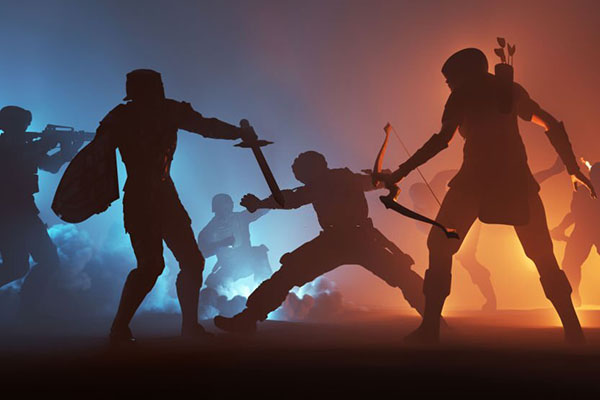
The Last of Us is a little different. Joel gets impaled and is taken out of the player controlling him in the narrative of the game. Ellie has to drag him out of there, doctor him up, and hide him. You play as Ellie during the final phases of his recovery. After a couple of months-long time jumps, Ellie has to survive human predators that are trying to find her and probably do some unspeakable acts to her. It’s a tough section to play in the game, quite honestly.
You get to learn how to survive as Ellie, and that’s who the player is in this supreme ordeal. Because of her limited combat abilities and weapons compared to Joel, it is a much harder challenge than the other parts of the game in a lot of ways. It’s interesting how The Last of Us chose to create their own supreme ordeal through game mechanics that are paired with storytelling.
It’s so cool that when you think about the hero’s journey and movies, and we’re just bystanders, sitting in a chair, the movie will happen even if we get up, get a drink, pop some popcorn, do stuff in the other room. It doesn’t matter. The movie begins, continues, and ends regardless of what we do. In games, the journey is the play of the game. That enables the game developers who create the way the story plays out.
All extra tools for the hero’s journey happen because player skill is part of the growth into being the hero and making the challenge feel insurmountable until you realize a new thing. That’s part of the struggle all these heroes go through in their stories. It’s so cool. Jenny, I’m going to take a break from talking for a second. Can you go ahead and read what the Kingdom Hearts supreme ordeal is?
The Kingdom Hearts’ supreme ordeal is Sora battles Ansem.
It’s Sora having a final battle with all the different phases of Ansem, armed with the Keyblade, saving his friend Riku, and is on the verge of saving Kingdom Hearts from pure darkness and finding his other friend Kairi. This is a big moment for Sora. This is the big challenge that he’s been waiting to walk into since he got dragged off of Destiny Island. This is his motivation for being in this story. For Revan, he’s heading to the Star Forge to confront Malak and find Bastila. You can do a white side or dark side in this story.
That does start to change things from here on out. Are you going to become Darth Revan? Are you going to be redeemed Revan? What is the reason you want to defeat Malak, and what’s going to happen to Bastila when you find her? It’s because Bastila has fallen to the dark side after being captured. They’re tugging all of the morality strings in the story in this game. We have a couple more phases here that run together. In all these video games, we’re getting to the end of the story. We have the reward or the power received and the ultimate boon. This phase is called seizing the sword. What is seizing the sword for our Hero of Time Link?
Link has the Master Sword and the power of the sages. He confronts Ganondorf at Hyrule Castle.
This is probably a boss fight that I’ve done 50 or so times in my life, which isn’t a huge number. I’m sure there are people that have done it five times as much. You just keep coming back. Ocarina of Time is such an amazing video game because it exemplifies the hero’s journey that seizing the sword is having the sword and the power of all the sages from all those dungeons and having the ability to walk up and fight Ganondorf.
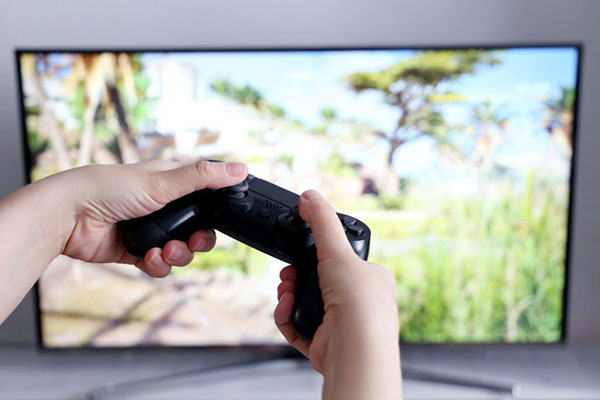
Kingdom Hearts is very similar. It’s a meeting up with Mickey defeating Ansem and closing the door to Kingdom Hearts so that darkness cannot get it. That does separate Sora from his friend Riku and King Mickey. Kairi ends up floating somewhere else because Sora doesn’t reach out and grab her in time. Kingdom Hearts is now open after this stage to having 149 sequels. That’s great.
In the Last of Us, when Joel recovers his strength, he finds Ellie. Ellie has survived. She has conquered some monstrous people. She kills David, who was trying to probably rape her, but he finds her. The reality is that she saved him and took care of him, and he’s gently walking and is back to being a productive adult in this terrifying world.
Ellie steps into that new role of Joel caring about her. That could potentially fill a dark void in his spirit that’s been vacated by the death of his daughter in the prologue of the game. That doesn’t exactly happen yet, but the seeds are planted because Joel’s seizing the sword is reclaiming Ellie from that potentially dangerous, life-ending or life-traumatizing circumstance.
In KOTOR, you defeat Bastila. You can either have her join you on the Sith side or forsake the dark side and come back to being a Jedi. You might even be able to kill her. I don’t know. I never did that, but choices mattered a lot in this game. You then defeat Malak, and the fate of the Star Forge rests on what side of the force you fall on.
This is where the gameplay has ended or is about to end a lot of times, but the stories are still going with many things waiting for us to see. Some of them I’ve already talked about in our games. Let’s do the road back. Jenny, when I say the road back, we’re particularly talking about the ends of these video games. What comes to your mind in terms of the heroes you know? What happens after they win the big battle?
Link is returned to childhood before he met Zelda, and the deeper phases of the journey began.
It’s like a reset on time. He’s essentially back to where he was before this story disconnected the path he was going as a boy in Kokiri Forest.
Similar to our show, when we go on our return, we wrap things up and get back to our ordinary world and regular lives.
Sometimes the road back is longer. Things happen to the characters too. For us, it’s a resolution that goes into the final phase we’re going to talk about. The road back can be an ordeal as well. Like I said with Sora, he lost Kairi. In the very end, he found her. She was right there. He reached out and didn’t get her. It’s 149 sequels to try to get into the same room with Kairi.
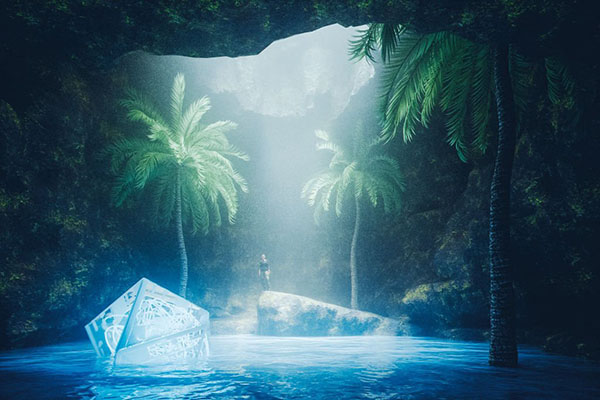
For Joel, he finds the hospital where the Fireflies are. They start looking and researching Ellie. Joel learns how they’re going to make this vaccine. That leads to the conclusion of the Last of Us story. For Revan, you have defeated Malak. You have the Star Forge and have ultimately your decision in the force on what you’re going to become. Are you going to be a savior of the Republic or the conquering ruler of the Sith Empire? That comes down to your choices.
The road back can look very different because Revan was a Jedi. Revan became a Sith. No matter which way he goes, he’s returning to one of his true natures. It’s fascinating to apply Knights of the Old Republic to this framework of thinking. We then have the resurrection and the return with the elixir.
Let’s try and talk about these at the same time. The hero’s resurrection is not just you die and come back. That would be a literal resurrection. Sometimes it’s metaphysical, philosophical, or spiritual as well that the hero is now a changed person with things in their identity they did not have at the beginning of the journey. What is that for Link?
For Link, he has conquered the darkness. He’s undone the dark rule timeline from his time, locked in the sacred realm after claiming Master Sword as a child. In his return, he’s become a hero in both his childhood and adulthood timelines. He saved Hyrule in both realms.
He’s changed. He’s the Hero of Time now. He’s back in that childhood timeline where things have not even gone bad yet, but he has all these experiences and abilities from the journey that made him into the Hero of Time. This iteration of Link is an amazing example of a changed person because of the journey of the hero.
Similarly, with Sora, I never realized how much Sora and Link reverberate off the same beats in their story. That’s the point of the monomyth too. Our psyche hears these stories and enjoys it, even though one has Disney, Keyblades, magic spells, and Final Fantasy cameos. The other has Hyrule, castles, swords, arrows, monsters, and dungeons.
Sora has become a true Keyblade wielder, closed the door to Kingdom Hearts, and shielded it from the darkness. Now he knows he has the power. He is empowered to continue searching for his friends Riku and Kairi with the help of Donald and Goofy. His friendship with Donald and Goofy has become a sign that he is the Keyblade wielder, which he was not at the beginning of the story. He was not friends with those two. He also had not defeated Riku in the easy path through the tutorial. Now he has defeated Riku, darkness, and things he could not do at the beginning of the journey.
For Joel, he realizes that to make the vaccine against the virus that has killed off most of civilization is to harvest Ellie’s brain and end her life to make the vaccine. Due to his bond and her coming to fill that dark void from the loss of his daughter, he cannot let that happen. He murders the doctor out of reflex, trying to claim Ellie. He won’t let her do it. He kills him and takes Ellie out of the hospital. She’s unconscious because she was already sedated. They drive away, no vaccine, and humanity is doomed, but the bond from the journey between Joel and Ellie is intact. He lies to her about it too, which is a great foundation for a trusting lifelong bond.
In KOTOR, we already talked about this. Whatever you choose to do in your path to the Star Forge to defeat Malak decides what side of the galaxy has peace, power, control, and all of those things. We have these four heroes with journeys that are concluded or to be continued. That’s the last thing I want to say about the hero’s journey. When you finish one journey, there’s going to be another one because we still have things that we will strive for.
That’s probably why every episode of this show when we do our return, ends with me asking our audience and Jenny and reminding myself to continue the journey is that the end of an episode is the end of something we set out to do. What then is the next thing? How do we keep making that ordinary world a little bit better through our actions? I’m going to forego some of the research stuff from our normal ascent section. We can do that in our next episode to give them something to look forward to. Let’s do our return. Jenny, what are your final thoughts about this conversation?
It’s a bigger conversation than I thought it would be. It always is.
We should set ourselves up to think it would be a simple conversation and talk about everything we prepared.
It’s important. It’s so interesting. I thought I knew so much about this topic. I love exploring this stuff. It’s fun to think about these different phases. Even the different shows I’ve been watching on Netflix, I’m thinking about those shows and remember when they refused the call on this episode. It’s funny, but it’s an important part of our culture, the hero’s journey. I’m looking forward to applying it to my life. You’d do a great job of doing that. I’ve never taken this beyond our conversations and the show. That will be fun.
That is something that we can do next episode. It lines up nicely with the research component and my upcoming presentation on the video game journey. Maybe we should do a podcast version of that conversation.
It’s how you can apply the hero’s journey to your life. We talked about a hero’s journey in gaming and how it applies to psychology would be the next step.
That sounds great to me. I have a call to adventure for everyone to answer. Be heroic and continue the journey.
See you next episode.
Important Links
- @DrGameology – Twitch
- iTunes – The Gaming Persona
- Stitcher – The Gaming Persona
- Spotify – The Gaming Persona
- Google Podcasts – The Gaming Persona
- The Hero with a Thousand Faces
- @GearUpGamingShop – Instagram
- GearUpGamingShop.com
- @J.LeBronPhotography – Instagram

